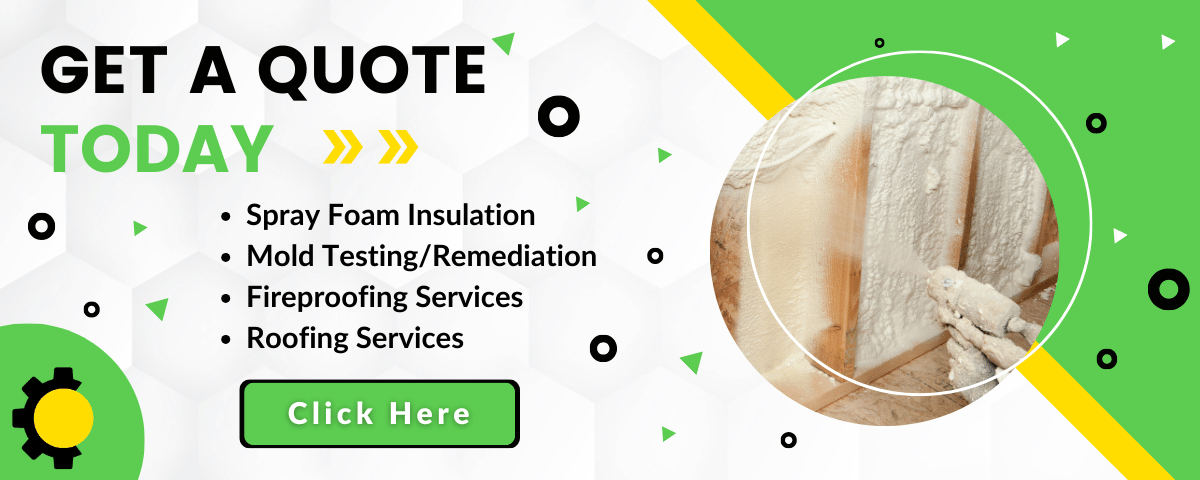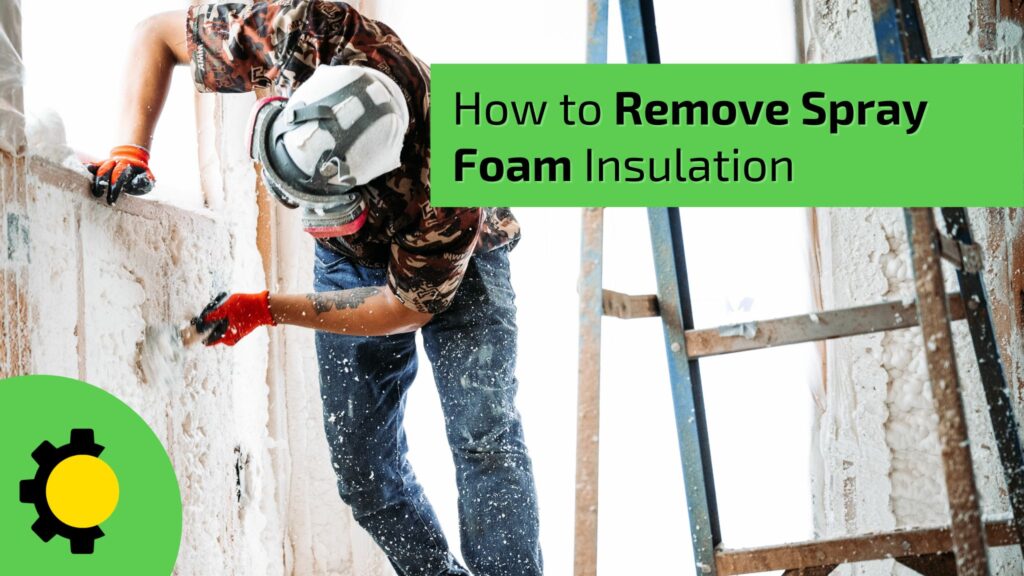Spray foam insulation will make your home more energy efficient and comfortable. It is possible, however, that you may need to remove spray foam insulation due to a mistake or renovation. It is therefore important to learn how to remove the spray foam insulation whether it has been cured or is not.
Why should you remove spray foam?
By air-sealing, spray foam insulation can make any building more energy-efficient and comfortable. Spray foam insulation is also durable and non-toxic, which makes it an environmentally friendly product. Regardless, some situations may call for you to remove spray foam insulation in buildings or homes.
Although spray foam lasts a long time, it can be damaged. When spray foam is damaged, it will need to be removed from walls, floors, or roofs. Pests, moisture and fire can cause damage to areas such as attics, basement walls, or spray foam.
Spray foam can also be removed because of improper installation, which causes problems. Spray foam that is not installed correctly can cause problems with the air quality of a building. When spray foam isn’t allowed to cure properly it can release toxins and smells.
Renovations can lead to foam insulation being removed by many homeowners. You may also want to upgrade to a new type of spray-foam to achieve a higher R-value.
There are two ways to remove spray foam – manually or with a machine.

Spray foam insulation can be removed manually
This article assumes that you are removing spray foam from building materials and not clothing or your body.
Step 1: Put on a mask
Chemically, spray foam is a nasty substance. The spray foam is made up of polyol and isocyanate resin. These two chemicals expand when they react and prevent air from entering the foam interior, creating a barrier. The chemicals then harden to a solid and offer long-term heat protection.
As long as you do not disturb them, the foam particles are safe. When you manually remove spray foam, the particles that are released can enter your lungs and atmosphere. Wearing a mask is therefore essential.
Step 2: Allow the insulation to dry
Do not remove the insulation immediately after it was installed if an error was made. Wait for the insulation to dry completely before removing it. It will be easier to remove after it hardens.
Step 3: Remove the excess insulation
Use a saw or other suitable tool to pry or cut the insulation from the construction material once it has hardened. Use a hammer and chisel if you want to remove the spray foam from an area (such as around a door). But be careful to avoid damaging any hidden electrical wires.
Step 4: Use a hard-bristled brush to remove any remaining spray foam
If you can’t remove more foam with the above tools, use a paint scraper or a brush with hard bristles. These tools can be used to remove the remaining foam from brick, wood, or concrete.
You may have to use different-sized brushes at times to reach all of the corners and crevices. Continue to brush carefully. You can return to the area later if you cannot remove all of it in one session.
Step 5: Apply lacquer thinner
You may want to use lacquer thinner after you have removed most of the spray foam.
The lacquer thinner can be used to dissolve polyurethane products that have not been cured. It is often used by spray foam contractors to remove insulating foam after the larger particles have been removed.
Nail polish remover can be used if you do not have lacquer thinner on hand. It contains acetone which dissolves uncured polyurethane.
Please note that neither nail polish remover nor lacquer thinner will remove cured foams.
Step 6: Clean Up the Mess
Cleaning up the mess is the final step. A dustpan and brush should be sufficient if you are only removing a small amount. If you need to remove more spray foam insulation, then you will need a heavier-duty solution.
Removing spray foam insulation with a machine
You’re absolutely right if you think that all of this sounds like a lot of work. It’s a huge task to remove even a small amount of spray foam. There are many machines available that can do the work for you and save you time.

Step 1: Put your mask on
You’ll still need to wear a mask in order to avoid inhaling errant particles.
Step 2: Connect the spray foam machine to the vacuum hose
Next, you will need to install your spray foam machine so that the insulation can be easily removed.
The power required to run the spray foam vacuum unit is substantial. It is not practical to move them in some places, such as attics. Most come with expandable hoses. You can use them like giant vacuum cleaners to run through an entire building and put them exactly where you want.
Connect the hose at the central unit, and then run the hose through the area where you want it. Attach the vacuum bag at the same time to collect all the materials you slurp.
Step 3: Remove the spray foam from the wall
These vacuum systems may be powerful but they are not enough to remove the dried-on foam from your construction materials. You will have to use the above method to chip away the foam.
Step 4: Vacuum up the old insulation
Vacuum all the insulation material.
Spray foam machines are essentially large vacuum cleaners with a lot of power. It can take a long time to remove damaged or incorrectly applied insulation. These pieces of equipment can drastically reduce the time it takes to remove damaged or improperly applied insulation. It only takes a few moments to remove the old or damaged insulation from your attic with a good machine. This allows you to replace the material in a single trip, saving time and money.
Step 5: Apply the lacquer
Apply the lacquer thinner to any surfaces that still have spray foam. This step is not necessary if you are removing regular foam.
Final thoughts on removing spray foam
There are many pros and cons to spray foam insulation. But its removal is definitely one of the cons.
It can be quite a chore to remove spray foam from construction materials. You can do most small jobs by hand. A small amount of foam that has been misplaced is a simple task. To fix more serious mistakes, you will need a vacuum machine. You could waste days collecting foam from walls or attic floors.
If you spray foam insulation onto your skin while it’s still wet, please remove it as soon as possible. You can remove any residue by rubbing the foam down with a dry cloth and adding acetone. Some people add moisturizers to their skin to keep it supple.

